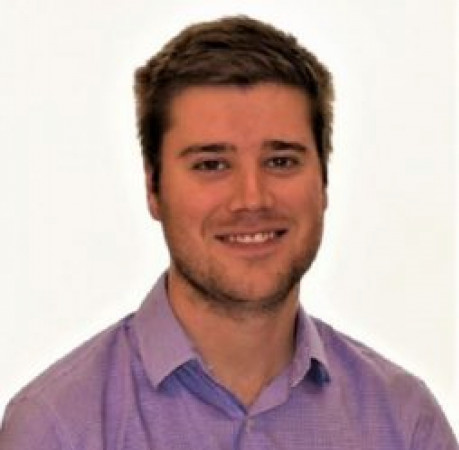Two roads diverged in a wood, and I took the one less traveled by, and that has made all the difference…
– Robert Frost
In the early days of medical school, the prospect of pursuing a rural family medicine residency program was unfathomable. Frankly, rural medicine was simply NOT on my radar. Throughout my life, I resided in larger cities throughout British Columbia (Kamloops, Victoria and Kelowna). How and why then did I choose to take the path less traveled by?
The How
As part of the UBC Clerkship year, medical students were required to complete a one-month rural family medicine rotation. I “strategically” selected the communities of Shawinigan Lake and Duncan, B.C. because of their proximity to Victoria, B.C. Never would I have anticipated this rural training experience would set off a chain-reaction in my mind… but it sure did. Sometimes, I still ponder how one brief experience managed to alter my life and training trajectory.
I suddenly began seeking out learning opportunities in rural and isolated communities. In my fourth year, I spent 20 weeks in communities of 4,000 to 25,000 people: Duncan, Whitehorse, Revelstoke, Nelson and Grand Forks. During this time period, I remember vividly talking to my sister, a resident physician in Edmonton at the time.
“You know Landon, every time we talk, you’re somehow in some new tiny community in B.C…” Throughout my life, I’ve had an innate ability to perplex her. “You should really think about spending some time in Vancouver, Edmonton or Calgary. The training in academic centers is excellent.”
She is right, the merits of our Canadian urban residency programs are well-established. Her intentions were inherently good and genuine and I found the prospect of selecting an alternative path particularly difficult and unsettling. The reality is every decision we make is biased by our experiences. For me, I found my training in rural environments more involved, engaging and rewarding compared to my prior urban clinical experiences. Ultimately, these overwhelming positive experiences and exposures persuaded me and I’m pleased with my decision to complete my rural family medicine residency through Medicine Hat.
The Why
For me, practicing in a rural setting has two fundamental features I find very appealing: the expanded scope of practice and the people.
The Expanded Scope of Practice
I’ve discovered the rural setting facilitates an unparalleled amount of diversity and flexibility on a weekly basis. I began residency by spending seven weeks in the rural community of Bow Island, Alberta. Here, four family physicians provide care to this community of ~2000 people and surrounding areas through their shared Primary Care Clinic and the Bow Island Health Centre. For context, The Bow Island Health Centre has 10 acute care beds, 20 long-term care beds and a 24-hour emergency department.
The diversity of clinical exposures was extraordinary. Every morning, I would round on my inpatients of varying complexity. The management of some patients was uneventful, but many required coordinating transfers for imaging (No CT), transfers to secondary or tertiary centers for further management and the opportunity to care for palliative patients. Following rounds, I would jump start my day by heading to the Emergency Department and begin seeing patients. The acuity and patient volume varied as expected in a rural Emergency Department, but I had ample opportunities to consult specialists, admit patients and coordinate transfers.
In the afternoon, my wonderful preceptors had often coordinated biopsies, ingrown toe-nail removals, knee and shoulder injections, etc. to further develop my small procedural skill set. Other afternoons, I would either stay in the ED, or attend the Primary Care Clinic and get my first dose of providing care in the COVID Era.
In the rural setting, “You’re it” no matter what comes through the door. You’re the ED doc, you admit patients to YOURSELF and often you’re the Family Physician who sees the patient in follow-up. You are required to manage and stabilize complex patients before transport with limited resources and limited staff often much longer than desired. Practicing in the rural setting challenges you every day and I love the challenge.
The People
However, the true blessing of rural practice is the people. The rural setting has an uncanny ability of uniting allied healthcare teams. I feel the strength of this union is driven primarily by familiarity and the shared burden of providing patient care in a resource-limited environment.
Within two weeks of my time in Bow Island, I knew the names of and spent multiple shifts with most staff members in the Bow Island Health Centre. This familiarity rapidly promotes a safe and comfortable working environment and you promptly feel well integrated into the healthcare team. In comparison to my urban training experience, I haven’t once felt as connected to the allied healthcare team as I have in my rural experiences.
In Bow Island, the hospital team typically consisted of myself, my attending, one RN in the ED and one RN/one LPN on the inpatient side. Together, you manage difficult situations often pushing the team to the brink of our capabilities. Meanwhile, you share the underlying daily burden and stress of providing patient care with limited resources. Longitudinal relationships are formed and the opportunity to see each team member grow through shared experiences was striking and rewarding. The bottom line is the rural setting facilitates a true sense of “community” that is easy to infiltrate, and a privilege to be a part of.
Now, if you’re reading this, you’ve made it. I’ve captured your attention for 910 words (and counting) and I should be hired by Facebook to provide you with targeted advertisement. Anyhow, I digress.
In brief, I’ve found rural medicine challenging, but beyond rewarding; it has provided me with an indescribable sense of fulfillment. The key is exposure. Please try it, it’s wicked awesome and don’t worry, it’s no Pandora’s Box.




Be the first to leave a comment!